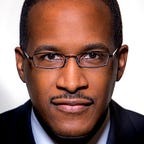An Open Letter to ‘U.S. News & World Report’
(This letter was published in the March 9, 2023 issue of The Chronicle of Higher Education)
Dear U.S. News,
I read your open letter to Secretary of Education Miguel Cardona in response to his keynote speech at the recent Conference on Best Practices for Law School Data sponsored by Harvard and Yale Law Schools. His accurate, hard-hitting remarks seemed to shake the altar of selectivity you have built, and you decided to respond. And as you have tried every time you are challenged to defend your rankings, you never, ever can refute the basic premise of the rankings.
Simply stated, you rank wealth and privilege, nothing more.
The rankings are no more than a higher education version of “Lifestyles of the Rich and Famous” or “MTV Cribs.” Cardona makes this plain when he indicates “colleges spend enormous resources chasing rankings they feel carry prestige, but in practice, just Xerox privilege and drive-up costs” and “rankings discourage institutions with the largest endowments and greatest capacity to enroll and graduate more underserved students from doing so because it may hurt their selectivity.”
Once again, you ran away from this criticism and simply asked for more data to be given to you. Allow me to give you data to show that Secretary Cardona is right, and that your ranking overwhelmingly reflects wealth and privilege.
If we look at the national university rankings for 2023, and I use the first 20 institutions, they average 18 percent Pell first year students, with only 3 percent of students over 25 and 4 percent part-time students. If I drop down to schools ranked 105–125, they average 24 percent Pell, 7 percent over 25, and 10 percent part time. If we drop further to schools ranked 250–270, we’re now up to 33 percent Pell, 15 percent over 25 and 18 percent part time. Finally, if I randomly select twenty schools in the bottom tier, the numbers explode: 46 percent Pell, 15 percent over 25 and 24 percent part time.
This is your data that you never acknowledge form the crux of your rankings.
But I went a step further and used the data from The New York Times Economic Diversity and Student Outcomes at America’s Colleges and Universities. For the top 20 national universities, the median family income is $176,000 with 68 percent of students coming from the top quintile, and 4 percent from the bottom quintile. For our second group, the median family income is $118,200, with 54 percent from the top quintile and 5 percent from the bottom. In the third ranking group, median family income falls to $92,400 with 40 percent from the top quintile and 6 percent from the bottom. And with our bottom tier sample, the median family income is $69,400 with 26 percent of students from the top quintile and 12 percent from the bottom.
I performed the same calculations with national liberal-arts institutions with the same results, and even larger gaps. The top 15 liberal arts institutions are 19 percent Pell with less than 1 percent part time or over 25 students. A sample of 15 bottom-tier institutions was 55 percent Pell with 9 percent part time and over 25 students. Top-tier national liberal-arts student bodies have median family incomes of $181,200, with 66 percent from the top quintile and 4 percent from the bottom, while bottom-tier liberal-arts students have $60,600 median family incomes with 21 percent from the top quintile and 16 percent from the bottom.
Don’t miss this. The bottom-ranked colleges have students with one third the median family income of the top-ranked colleges.
The access to data is not the problem. The problem is using a formula to pretend that this is a scientific measurement of quality, making these the “best” colleges and universities. You could use all the data only for a dashboard for students to input key factors that are important to them, and then give them some suggested places to begin their college search.
You would legitimately become “U.S. News Best Colleges For You.”
But this was never about students. It was always a revenue stream, capitalizing on Americans’ need to be better than someone else. We were reminded how important rankings are when Alabama didn’t make it into the NCAA football playoffs (which they should have if you watched Georgia demolish TCU). Most of the time though, in sports, the eventual ranking is based on who wins. When rankings drive college choices, untold numbers of students lose as they chase prestige when the best fit might be a bottom-tier school that is the best at assisting students like them to achieve their goals.
The perennial winners in U.S. News rankings are the richest of the rich, and each year you remind us who they are. That’s all you do. That’s what Secretary Cardona pointed out, and you replied you wanted more data.
Here you go, and it clearly shows who you really are, and what you really do.
Walter Kimbrough
Interim Executive Director. Black Men’s Research Institute
Morehouse College
Atlanta
